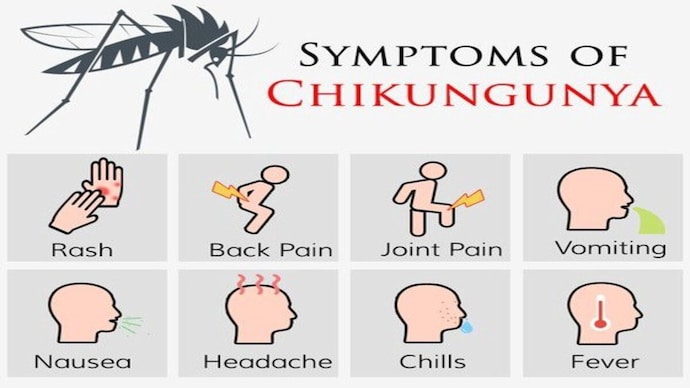Nursing Paper Example on Chikungunya
Nursing Paper Example on Chikungunya
Chikungunya is a viral disease transmitted to humans through the bites of infected Aedes mosquitoes, primarily Aedes aegypti and Aedes albopictus. First identified in Tanzania in 1952, chikungunya outbreaks have since occurred in various parts of the world, including Asia, Africa, Europe, and the Americas. The disease’s name is derived from a Makonde word meaning “that which bends up,” describing the stooped posture caused by severe joint pain, a characteristic feature of the illness.

Causes of Chikungunya
Chikungunya is caused by the chikungunya virus, a single-stranded RNA virus belonging to the Togaviridae family and the Alphavirus genus.
Vectors:
- Aedes aegypti: A primary vector found predominantly in tropical and subtropical climates.
- Aedes albopictus: A secondary vector adapted to cooler climates, expanding the virus’s geographical range.
Transmission cycle:
- Humans become infected through the bite of a mosquito that has fed on an infected person.
- The virus can also infect nonhuman primates and other mammals, which may act as reservoirs.
Environmental conditions such as warm temperatures and stagnant water favor mosquito breeding, increasing transmission risk.
Signs and Symptoms
The clinical presentation of chikungunya includes an acute febrile phase followed by chronic symptoms in some individuals.
Acute symptoms:
- Fever: High-grade fever lasting 3–5 days.
- Polyarthralgia: Severe joint pain, particularly in the wrists, knees, and ankles.
- Rash: Maculopapular rash affecting the trunk, limbs, and occasionally the face.
- Headache, myalgia, and fatigue.
Chronic symptoms:
- Persistent joint pain: Some patients experience arthritis-like symptoms lasting months to years.
- Relapsing joint pain is more common in older adults and those with preexisting joint disorders.
Complications are rare but may include neurological, cardiac, and ocular manifestations, particularly in severe cases or immunocompromised individuals.
Etiology
The chikungunya virus’s ability to cause disease stems from its structural proteins and interactions with host immune responses.
Viral properties:
- Envelope glycoproteins E1 and E2 mediate cell entry and fusion.
- Nonstructural proteins facilitate replication in host cells.
Host factors:
- Individuals with weakened immune systems or comorbidities are more susceptible to severe forms of the disease.
- Genetic predispositions may influence the intensity of immune responses and symptom severity.
The virus’s high replication rate contributes to rapid symptom onset and systemic inflammation.
Pathophysiology
The chikungunya virus primarily affects epithelial and endothelial cells, fibroblasts, and macrophages.
Virus entry: Following a mosquito bite, the virus enters dermal fibroblasts and begins replication.
Immune activation: Infected cells release proinflammatory cytokines, leading to fever, joint inflammation, and systemic symptoms.
End-organ effects: Chronic joint symptoms result from immune-mediated inflammation rather than ongoing viral replication.
The virus’s tropism for joint and muscle tissues explains the persistent pain and swelling seen in chronic cases.
DSM-5 Diagnosis
As chikungunya is an infectious disease, it is not classified under psychiatric or psychological disorders in the DSM-5. However, psychological impacts such as depression or anxiety related to chronic pain or prolonged recovery may require evaluation using DSM-5 criteria.
Diagnosis
Accurate diagnosis of chikungunya relies on clinical assessment and laboratory confirmation.
Clinical evaluation:
Consider travel history to endemic regions.
Assess symptom onset, particularly fever and joint pain, along with physical examination findings such as rash or joint swelling.
Laboratory tests:
- Serology:
Detection of chikungunya-specific immunoglobulin M and immunoglobulin G antibodies.
- Polymerase Chain Reaction (PCR):
Identifies viral RNA in the early stages of infection.
- Viral culture:
Performed in specialized laboratories to confirm the presence of the virus.
Differentiating chikungunya from other mosquito-borne illnesses, such as dengue or Zika virus, is critical for appropriate management.
Treatment Regimens
Currently, no specific antiviral treatment exists for chikungunya. Management focuses on relieving symptoms and preventing complications.
Supportive care:
- Analgesics and antipyretics:
Paracetamol is recommended to alleviate fever and joint pain.
Nonsteroidal anti-inflammatory drugs are avoided in suspected dengue co-infection due to bleeding risks.
- Hydration:
Oral or intravenous fluids to prevent dehydration.
- Rest:
Encouraged during the acute phase to reduce stress on joints.
Chronic symptom management:
- Physical therapy:
Exercises to improve joint mobility and reduce stiffness.
- Disease-modifying agents:
Rarely required for persistent arthritis-like symptoms.
Research into chikungunya-specific antivirals and vaccines is ongoing.
Patient Education
Effective education minimizes disease spread and aids recovery.
Preventive measures:
Avoid mosquito bites through protective clothing, insect repellents, and mosquito nets.
Eliminate standing water to reduce mosquito breeding sites.
Symptom recognition:
Early detection of fever and joint pain can prompt timely medical attention.
Recovery strategies:
Follow medical advice regarding pain management and physical therapy.
Maintain hydration and a balanced diet to support immune recovery.
Empowering patients with accurate information reduces complications and transmission risks.
Additional Considerations
Complications:
- Neonatal chikungunya: Severe outcomes in infants born to infected mothers.
- Rare cardiac or neurological sequelae in severe cases.
Epidemiology:
- Reemergence in nonendemic regions due to globalization and climate change.
Research directions:
- Vaccine development is progressing, with several candidates in clinical trials.
- Understanding viral evolution and immunity for better prevention and treatment.
Conclusion
Chikungunya is a significant public health concern, particularly in regions with endemic mosquito populations. Its rapid onset of symptoms, particularly debilitating joint pain, requires prompt diagnosis and supportive care. Preventive strategies, including vector control and public education, are critical to reducing disease burden. Advances in research on vaccines and antivirals offer hope for more effective management in the future.
References
Centers for Disease Control and Prevention. (2023). Chikungunya virus: Symptoms and treatment. https://www.cdc.gov/chikungunya/symptoms/index.html
World Health Organization. (2023). Chikungunya. https://www.who.int/news-room/fact-sheets/detail/chikungunya
Weaver, S. C., & Lecuit, M. (2015). Chikungunya virus and the global spread of a mosquito-borne disease. New England Journal of Medicine, 372(13), 1231-1239. https://www.nejm.org/doi/full/10.1056/NEJMra1406035
Pialoux, G., Gaüzère, B. A., Jauréguiberry, S., & Strobel, M. (2007). Chikungunya, an epidemic arbovirosis. The Lancet Infectious Diseases, 7(5), 319-327. https://doi.org/10.1016/S1473-3099(07)70107-X
Pan American Health Organization. (2023). Epidemiological alerts and updates: Chikungunya. https://www.paho.org/en/topics/chikungunya


